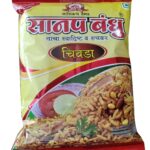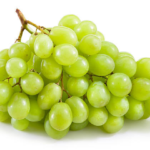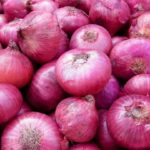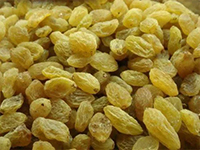Physical Address
304 North Cardinal St.
Dorchester Center, MA 02124
Physical Address
304 North Cardinal St.
Dorchester Center, MA 02124
Nashik specials
Nashik is renowned for some special things which are exclusive only to Nashik like:
Nashik Chivda
Nashik Grapes
Nashik Misal
Nashik Onions
Nashik Pomegranates
Nashik Raisins
Nashik chevda snack

Nashik is well-known for its delicious and popular snack called Chevda (or Chivda). This savory, crunchy snack is a staple in Maharashtrian cuisine and is enjoyed by many for its flavorful blend of spices and textures. Here are some key aspects of Nashik’s famous Chevda:
Description: Chevda from Nashik is renowned for its distinctive taste and quality. It’s a popular choice among locals and visitors alike.
Primary Components: The main ingredients typically include poha (flattened rice), peanuts, cashews, and a variety of spices.
Additional Ingredients: Sometimes, the mixture also includes dried coconut, curry leaves, and a blend of spices like turmeric, red chili powder, and cumin.
Process: Poha is usually roasted to give it a crispy texture. It is then mixed with fried nuts, spices, and occasionally other ingredients like raisins or fried curry leaves.
Flavor Profile: The result is a spicy, tangy, and mildly sweet snack that is perfect for tea-time or as a light meal.
Local Shops: Nashik has several renowned shops and stalls where you can find high-quality Chevda. Some well-known names include:
Where to Buy: You can find Chevda in local markets, specialty snack shops, and even in packaged form in grocery stores across Nashik.
Festive Occasions: Chevda is often enjoyed during festivals, special occasions, and as a part of everyday snacking.
If you’re visiting Nashik or passing through, trying the local Chevda is a must to experience a true taste of the region’s culinary tradition.
Nashik’s Grapes

Nashik is renowned for its thriving grape cultivation industry, which produces high-quality grapes used for winemaking, table consumption, and various other products. Here’s a feature highlighting the significance of Nashik grapes:
Ideal Growing Conditions:
Nashik’s geographical location, nestled amidst the Western Ghats and blessed with a moderate climate and fertile soil, creates ideal conditions for grape cultivation. The region experiences cool winters and dry, hot summers, which are conducive to grape ripening and flavor development.
The availability of ample sunlight and well-drained soil further enhances the quality and yield of Nashik grapes, making them sought after by growers and winemakers.
Premium Varieties:
Nashik is known for producing a wide range of grape varieties, including the popular Thompson Seedless, Red Globe, and Flame Seedless, among others. These varieties are prized for their sweetness, juiciness, and vibrant colors.
In addition to table grapes, Nashik is also home to vineyards cultivating wine grape varieties such as Cabernet Sauvignon, Shiraz, Chenin Blanc, and Sauvignon Blanc, which are used to produce world-class wines.
Economic Impact:
The grape cultivation industry plays a significant role in Nashik’s economy, providing employment opportunities to thousands of farmers, laborers, and professionals involved in cultivation, harvesting, and processing.
The success of Nashik grapes and wines has also led to the growth of ancillary industries such as packaging, logistics, tourism, and hospitality, contributing to the region’s overall economic development and prosperity.
Culinary Delights:
Nashik grapes are celebrated not only for their role in winemaking but also for their culinary versatility. They are used in a variety of dishes, desserts, and beverages, adding sweetness, texture, and flavor.
From fresh fruit salads to grape juice, jams, jellies, and even grape-based desserts like pies and tarts, Nashik grapes inspire culinary creativity and delight taste buds with their natural goodness.
Cultural Heritage:
Grapes have deep cultural significance in Nashik, symbolizing abundance, prosperity, and hospitality. The city celebrates its grape harvest with festivals such as the Grape Harvesting Festival, which showcases the region’s agricultural heritage and culinary delights.
Nashik’s grapes are not just fruits; they are a source of pride and identity, embodying the spirit of innovation, resilience, and excellence that defines the city’s agricultural legacy.
Nashik grapes are more than just a fruit; they are a symbol of the city’s rich agricultural heritage, entrepreneurial spirit, and culinary prowess. Nashik grapes captivate the senses, tantalize the taste buds, and tell a story of innovation, passion, and pride.
Nashik Misal Snack
Nashik Misal is a renowned dish from Nashik, Maharashtra, known for its unique and spicy flavor. It’s a popular breakfast or snack item and is loved for its tangy, spicy, and hearty taste. Here’s a closer look at Nashik Misal:

Base: The primary ingredient is sprouted moth beans (matki), which are cooked with spices and a tangy gravy.
Gravy: Typically made with onions, tomatoes, and a blend of spices like turmeric, red chili powder, and garam masala.
Tadka: A tempering of mustard seeds, curry leaves, and sometimes garlic or onions is added for extra flavor.
Farsan: A crunchy mixture of sev (fried gram flour noodles) or chivda is often added on top as a garnish.
Cooking: The moth beans are cooked with the spicy gravy until they are tender and flavorful. The dish is often simmered to allow the spices to meld well with the beans.
Serving: Nashik Misal is typically served hot with a side of pav (bread rolls), lemon wedges, and chopped onions.
Spice Level: Nashik Misal is known for its spiciness and tanginess, which distinguishes it from Misal in other regions of Maharashtra.
Flavor Profile: The combination of spices, tamarind, and sometimes jaggery gives it a distinctive taste that is both spicy and slightly sweet.
Local Eateries: Many local restaurants and street food vendors in Nashik serve their own versions of Misal. Some popular spots include:
Regional Favorite: Misal is a beloved dish in Maharashtra and holds a special place in Nashik’s culinary culture. It is often enjoyed as a hearty breakfast or a satisfying snack.
Trying Nashik Misal offers a delicious glimpse into the local flavors and culinary traditions of the region.
Nashik’s onions

Nashik onions, often referred to as “Nashik Kanda,” hold a special place in the culinary world due to their unique flavor, aroma, and versatility in various dishes. These are the features highlighting the significance of Nashik onions:
1. Quality and Flavor:
2. Culinary Versatility:
3. Economic Importance:
4. Festival Celebrations:
5. Innovative Uses:
6. Conservation Efforts:
In essence, Nashik onions are more than just a kitchen staple; they are an integral part of the region’s identity, culture, and economy. With their exceptional flavor and versatility, Nashik onions continue to captivate taste buds and inspire culinary creativity both locally and globally.
Nashik is renowned for its high-quality pomegranates, which are a significant agricultural product of the region. Here’s an overview of Nashik pomegranates:

Fresh Consumption: Pomegranates are enjoyed fresh, either by eating the arils directly or adding them to salads and dishes.
Juice: The juice of Nashik pomegranates is popular for its rich flavor and nutritional benefits.
Cooking: Pomegranate seeds are used in cooking to add a burst of flavor and texture to various dishes, including Indian curries and desserts.
Rich in Antioxidants: Pomegranates are packed with antioxidants, particularly punicalagins and anthocyanins, which help combat oxidative stress.
Vitamins and Minerals: They are a good source of vitamin C, vitamin K, and potassium.
Health Benefits: Regular consumption of pomegranates is linked to various health benefits, including improved heart health, anti-inflammatory effects, and enhanced memory.
Local Markets: Fresh pomegranates are available in local fruit markets and agricultural produce markets in Nashik.
Fruit Vendors: Many vendors and local shops in Nashik specialize in fresh pomegranates and pomegranate products.
Online Retailers: Pomegranates from Nashik can also be purchased from online grocery stores and specialty fruit retailers.
Nashik’s pomegranates are celebrated for their exceptional taste and quality, making them a sought-after fruit both within India and internationally.
Nashik Raisins

Nashik is renowned for producing high-quality raisins, and the city is often associated with the cultivation of grapes that are turned into these sweet, nutritious dried fruits. Here’s a closer look at Nashik raisins:
Nashik’s raisins are celebrated for their quality and taste, making them a delightful treat for those who enjoy dried fruits.